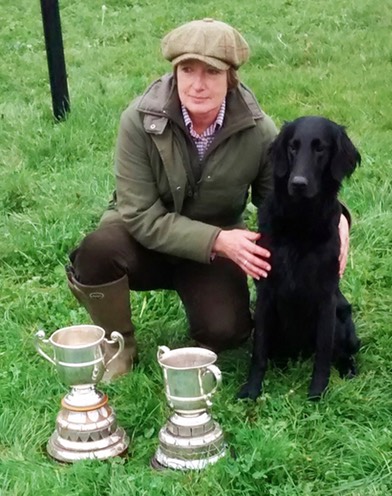1. What is your relationship with the breed? When did you get your first Flatcoat?
My first Flatcoat was born in 1989, I have owned one ever since. He was a pet, his pedigree indicates that he would have been a very good working dog, his Kennel name is Stones Jasper, sadly I cannot find any direct descendants. The first Flatcoat I started training for working was born in 2004, I knew nothing and we learnt together! I now train and occasionally breed with the aim of producing a good looking working dog which hopefully can trial, hold its own in an AV competition and is bred to standard.
2. What do you like the most in a working Flatcoated Retriever?
Their nose, their style when covering the ground and game finding ability and their fun outlook on life.
3. What abilities do you look for when you are breeding a working Flatcoated Retriever
Good hip score and eye, pedigree preferably with some field trial awards behind the dog or bitch, kind temperament , affectionate, good looking dog.
4. What could be done to promote the Flatcoat as a field trial/working test dog?

Encourage people to train them for work, find a sympathetic trainer and train with likeminded people.
5. How does a working Flatcoat excel as a picking up dog?
They are excellent markers of birds, when sweeping they frequently find birds other breeds of dog have missed because they air-scent.
6. What’s important to emphasize when training a Flatcoated Retriever?
When training a Flatcoat it is important to train the basics from an early age, sit, recall and stay but most importantly “little and often”. They become bored easily, be patient and be prepared to go back to basics at any time. Don’t train in big groups of dogs particularly when they are young, they can either switch off or become too excited and frustrated, depending on their temperament. Every dog is different too!